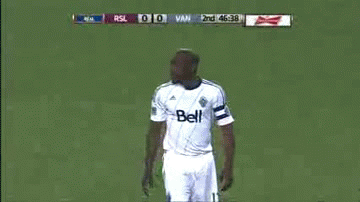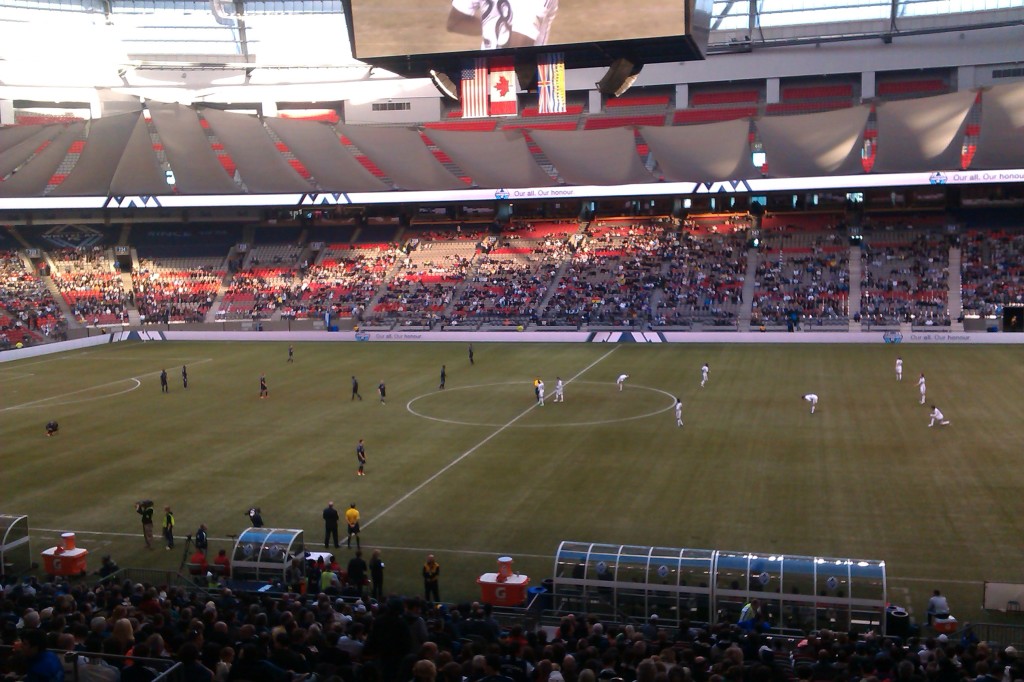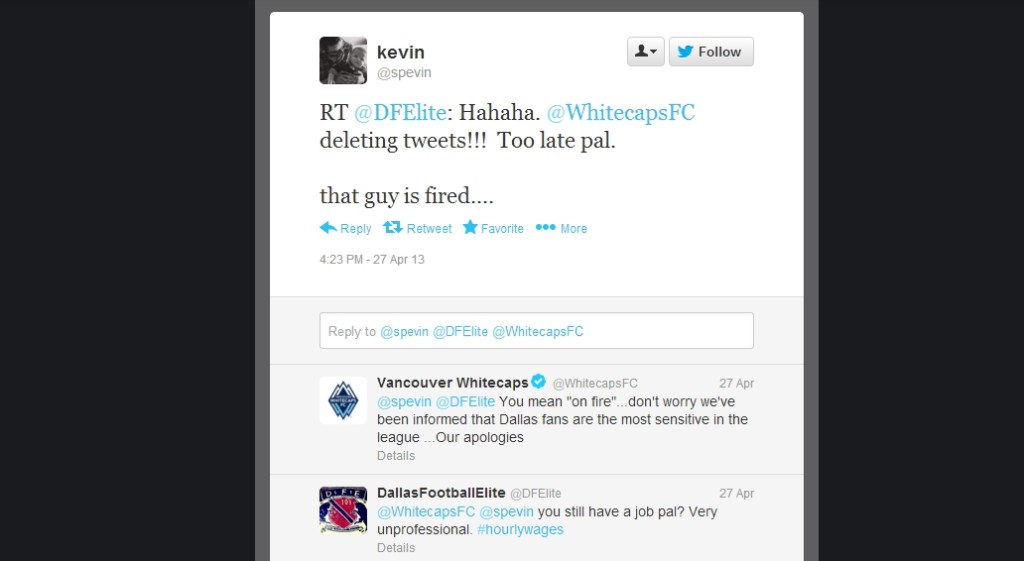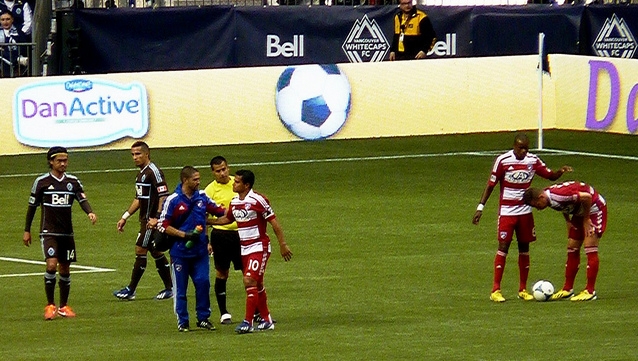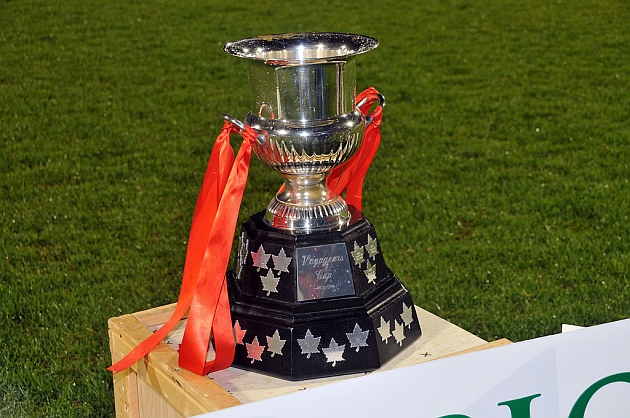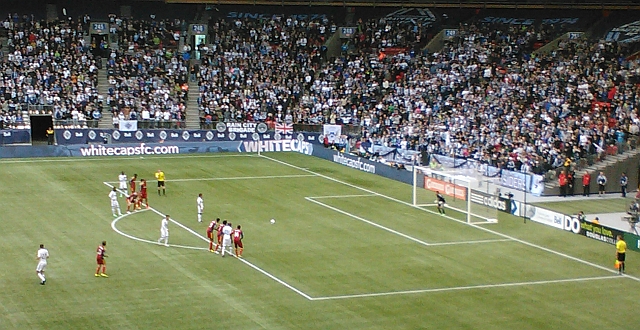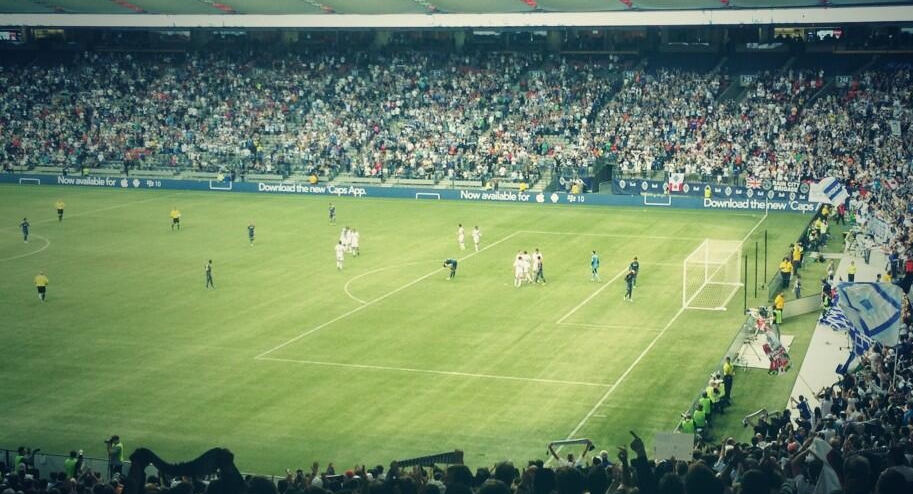
Players exhale after the Vancouver Whitecaps’ 3-1 win over the LA Galaxy at BC Place. Photo courtesy frostcake/pic.twitter.com
Sometimes you spend forever planning, and then something entirely different and wonderful happens instead.
The Whitecaps were in a rut of seven league games where everything should have worked and little did. So many chances, but not enough finish, not enough runs on. No combination of players or formations — go back to the diamond! Switch to 4-3-3! Koffie! Davidson! Koffie and Davidson! — seemed to produce the desired result.
The starting XI against the LA Galaxy felt like that: 1. Run out players who have had issues like Rochat, Davidson, Kobayashi and, most notably, Darren Mattocks. 2. Hope they turn it around. 3. ??? 4. Profit?
And yet, the player who did the most to change the game didn’t even start on the pitch. Injuries are always unfortunate, especially because Daigo Kobayashi’s 14th minute exit came as he tried to stay stuck in after being brought down by a tackle, keeping in mind recent criticism around soft play in the team. However, Kobayashi had been having trouble as of late and his early substitution created an opportunity that Russell Teibert seized with both hands.
Teibert, whose parents had come from Ontario to watch him play, stuck with the starters instead of peeling away with the subs in the pre-match warm up, and seemed determined and not a step behind upon his introduction.
His first goal was the most impressive. It was the kind of play the Whitecaps have been flubbing repeatedly of late: Teibert got himself on the end of a ball, weaved in and out of the box looking for an opportunity and was able to create something dangerous. It immediately changed the complexion of a game that had been thoroughly tentative to that point.
Though out-possessed, the Whitecaps had looked like they could still, with luck, get something from the game at half-time. But oblivion loomed. Thanks to out-of-town results, even a draw in this game would leave the Whitecaps back on the foot of the Western Conference table. Mattocks was, regrettably, still looking out of ideas on the ball.
LA defender Omar Gonzalez had a header that, though it was just past the far post, cut through the Whitecaps defence like hot butter two minutes before the goal. Had it gone in, these would all have been different conversations.
But it was Teibert’s confidence that put a different stamp on the game. Watch his second goal again to see how thoroughly he masterminds the opportunity. First, he calls for the pass. Not recieving it, he buzzes around Y.P. Lee until the ‘Caps defender decides to leave it for him anyways. He sends a ball through to Gershon Koffie, who holds the ball up and turns to see Teibert blazing into the box. Koffie’s pass is simple, like the shooting drill the team ran just before kickoff. Teibert, who that morning had never scored a professional goal, blasts in his second to give the Whitecaps, whose stalemate looked so tenuous just fifteen minutes earlier, not just a lead but a cushion.
These elements of the game are hard to describe or quantify, because they’re so immaterial. Why does one chance go in and another spill just wide? How can you turn around a team having such trouble with finishing when it seems so often to come down to circumstance? Teibert managed to do it.
And speaking of confidence, let’s return one last time to the issue of Darren Mattocks’ luck. It is impossible to overstate how mystifying his lack of success has been in front of goal has been week-in, week-out. He brought a portable raincloud to the attack in the first half against Edmonton, and nothing seemed to be working. Management was pleading for ideas, and supporters were anxious to know how long Mattocks needed to sputter before he could produce.
When I saw Mattocks pounce on a turnover and break in one-on-one with a defender only to put it right on LA goalkeeper Carlo Cudicini, I thought his confidence may have broken for good. He collapsed onto his knees and stayed down for moments. When he got up again to contest the resulting corner, he hung his head and A.J. DeLaGarza, the defender marking him, gave him a consolation pat on the back. I thought I had seen a low from which it would be nearly impossible to recover.
And yet.
It is, like I said, hard to quantify confidence or belief. But Mattocks, who has been so often out of position or ideas or plain unable to find and complete opportunities, saw a ball get away from Jordan Harvey and float tantalizingly in front of him for just a moment. He broke away from DeLaGarza easily and whacked it in off of Cudicini’s insole. The relief for Mattocks but also his whole team on seeing that goal go in is palpable. What makes this different than all the other attempts of late? Can’t say. But he was in the right place. He went for it. He made it count.
It remains, regardless, Teibert’s night. And perhaps it’s better that way; now Mattocks and the ‘Caps can put this long, dim run of three points from a possible 21 behind them. They managed to neutralize the defending champions in front of a (as far as the club claims) sell-out crowd. Nobody could have laid out, prior to the game, the road map to this victory. But it happened. Onwards.
Stats after the jump.
